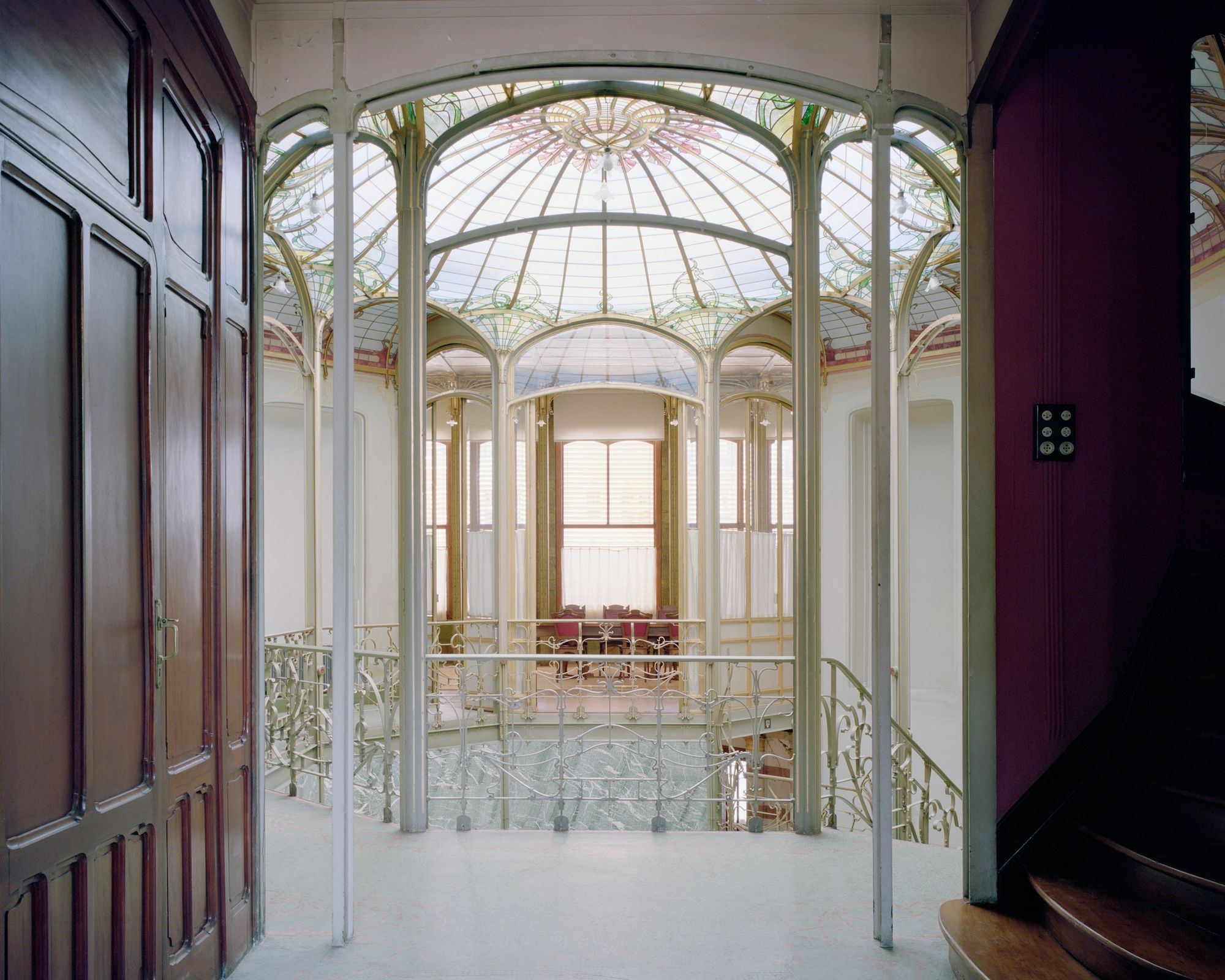DESIGN LEGENDS DECEMBER 5 2022
by Daniella Ohad
Design doyenne Daniella Ohad recaps her weekly conversations with the legends of architecture
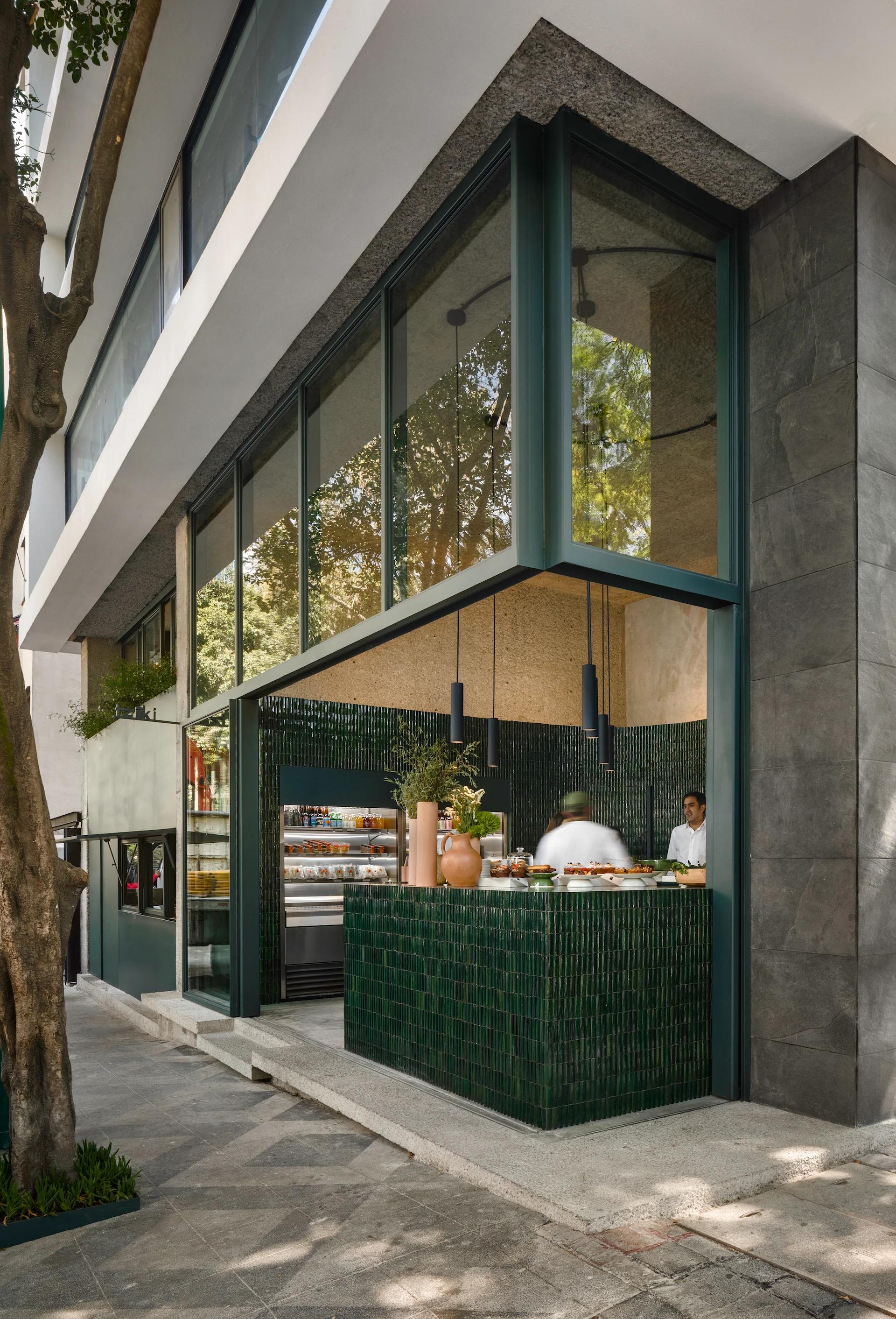
FRIDA ESCOBEDO/ NIDDO CAFÉ IN MEXICO CITY IN COLLABORATION WITH MAURICIO MESTA, 2020
Photo © Rafael Gamo
Each week this fall,Daniella Ohad hostsArchitecture: The Legends, a virtual program presented in partnership with Christie’s Education, comprising one-on-one interviews with the world’s most admired architects. For the Design Miami/ Forum, Ohad shares highlights from each conversation. This week her subject is Frida Escobedo.
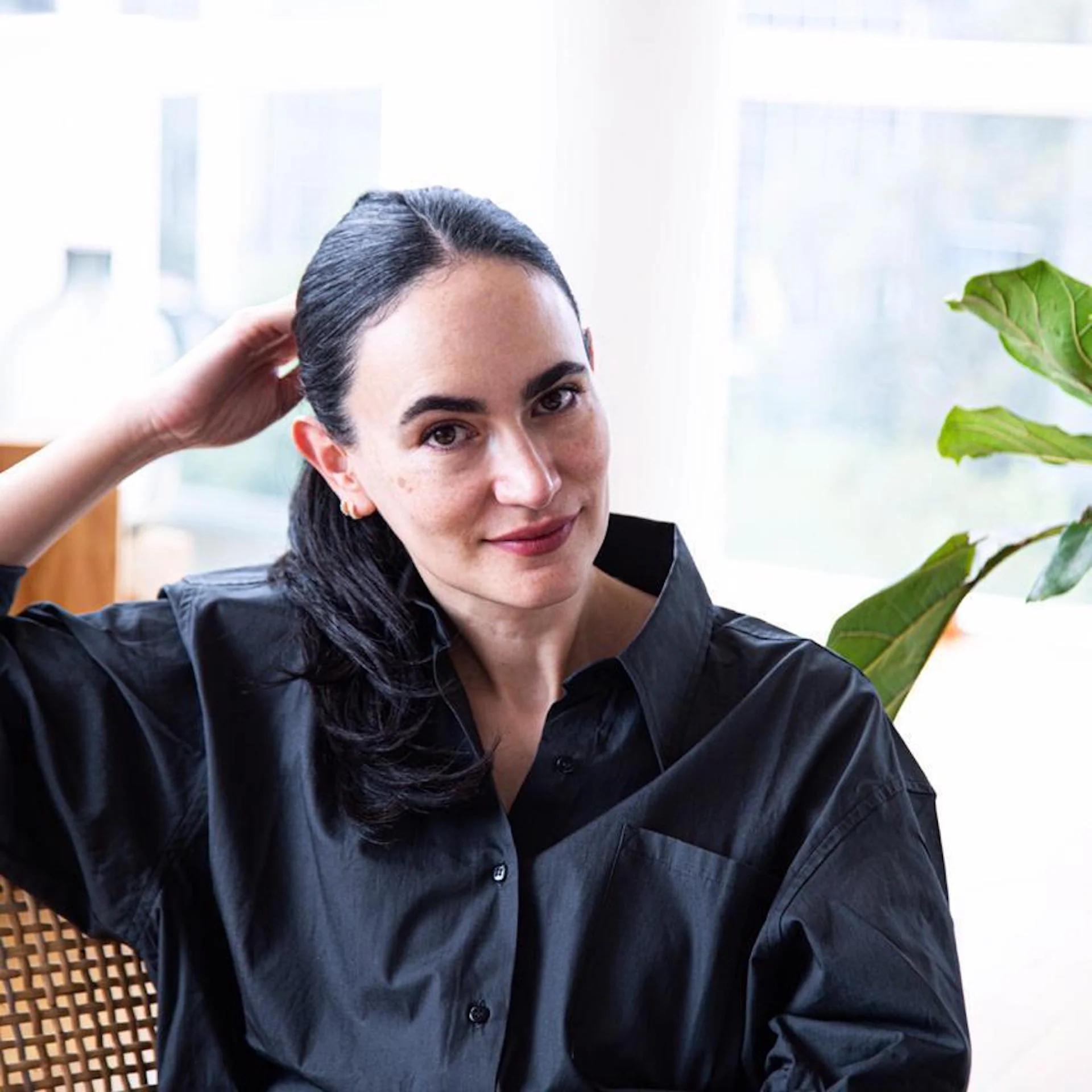
ARCHITECT FRIDA ESCOBEDO
Photo © Ana Gómez de León López
“I first collaborated with Frida on 89plus Marathon at Museo Jumex in Mexico City in 2014 and was very impressed by her new approaches to creating spaces of togetherness and communion. In 2018, her Serpentine Pavilion became a living timepiece in the park, powered by light and the Prime Meridian line. In its beautiful harmony of Mexican and British influences, it became a space of reflection and encounter for visitors of all ages… I continue to follow her incredible career, and I’m so happy for her upcoming MET commission.” —Hans Ulrich Obrist, Serpentine Gallery Artistic Director
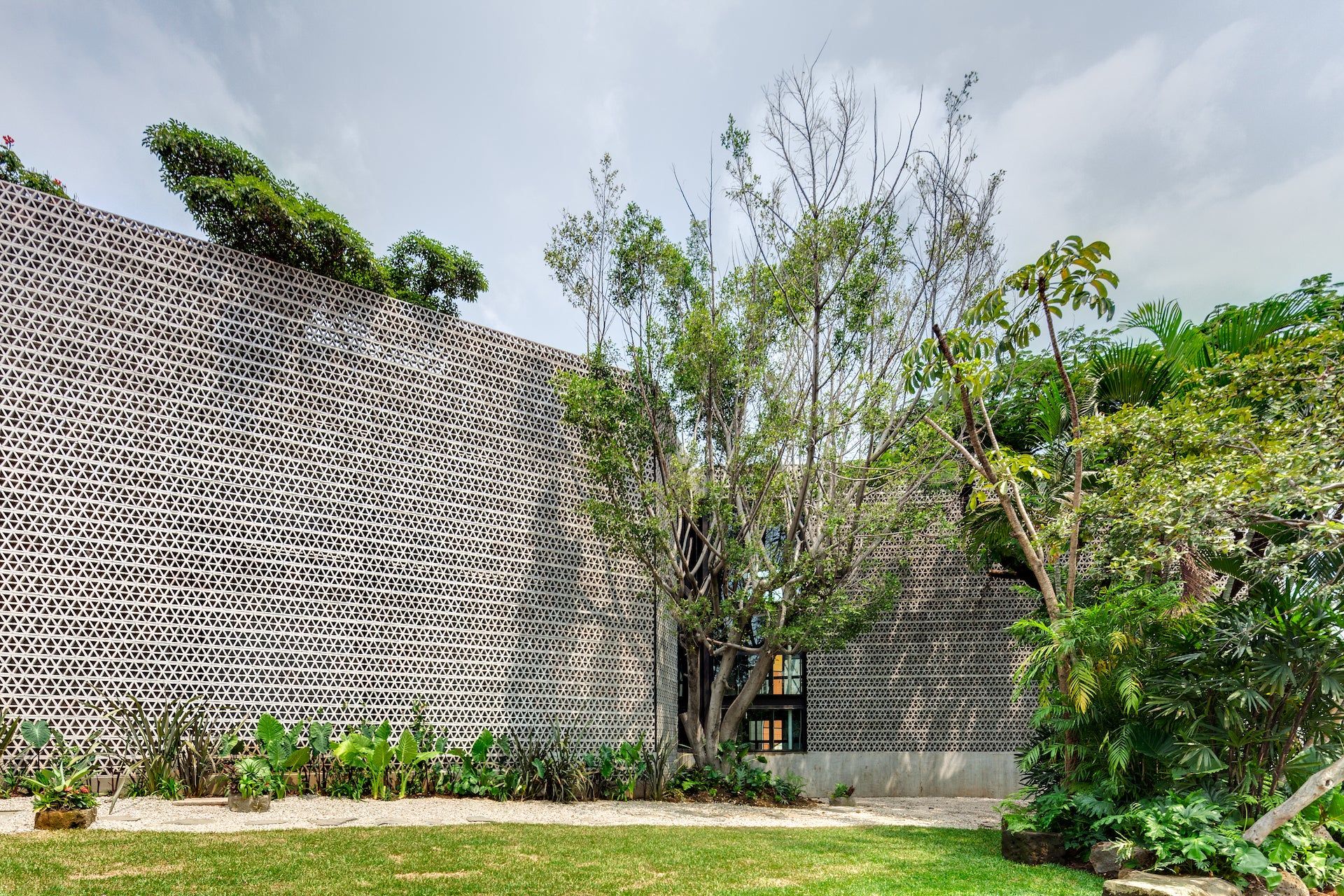
FRIDA ESCOBEDO'S RESTORATION OF LA TALLERA IN CUERNAVACA, 2012
Photo © Rafael Gamo
Every great success story includes a pivotal moment of triumph, an auspicious accomplishment that springboards the protagonist on a skyward trajectory. For Frida Escobedo, my guest last week for Architecture: The Legends, it was her 2018 Serpentine Pavilion. In the four short years since, this Mexico City-born-and-based architect has opened a second office in New York and multiplied her staff as she’s been inundated with offers to design and restore homes, hotels, institutions, community centers, and major public projects—including her recently-announced overhaul of the modern and contemporary galleries at New York’s Metropolitan Museum of Art.
The prestigious Serpentine commission, Escobedo told us, was utterly unexpected. Every year since 2000, London’s Serpentine Gallery has tapped a new cutting-edge architect to build a temporary public gathering space in Kensington Gardens. Under the curatorial direction of powerhouse Hans Ulrich Obrist, the program has become a high-profile barometer of contemporary architectural discourse. When Obrist’s initial invitation landed in Escobedo’s inbox, she didn’t even open it, assuming it must be an impersonal email blast. Thankfully, a second email caught her notice, and the rest is history.
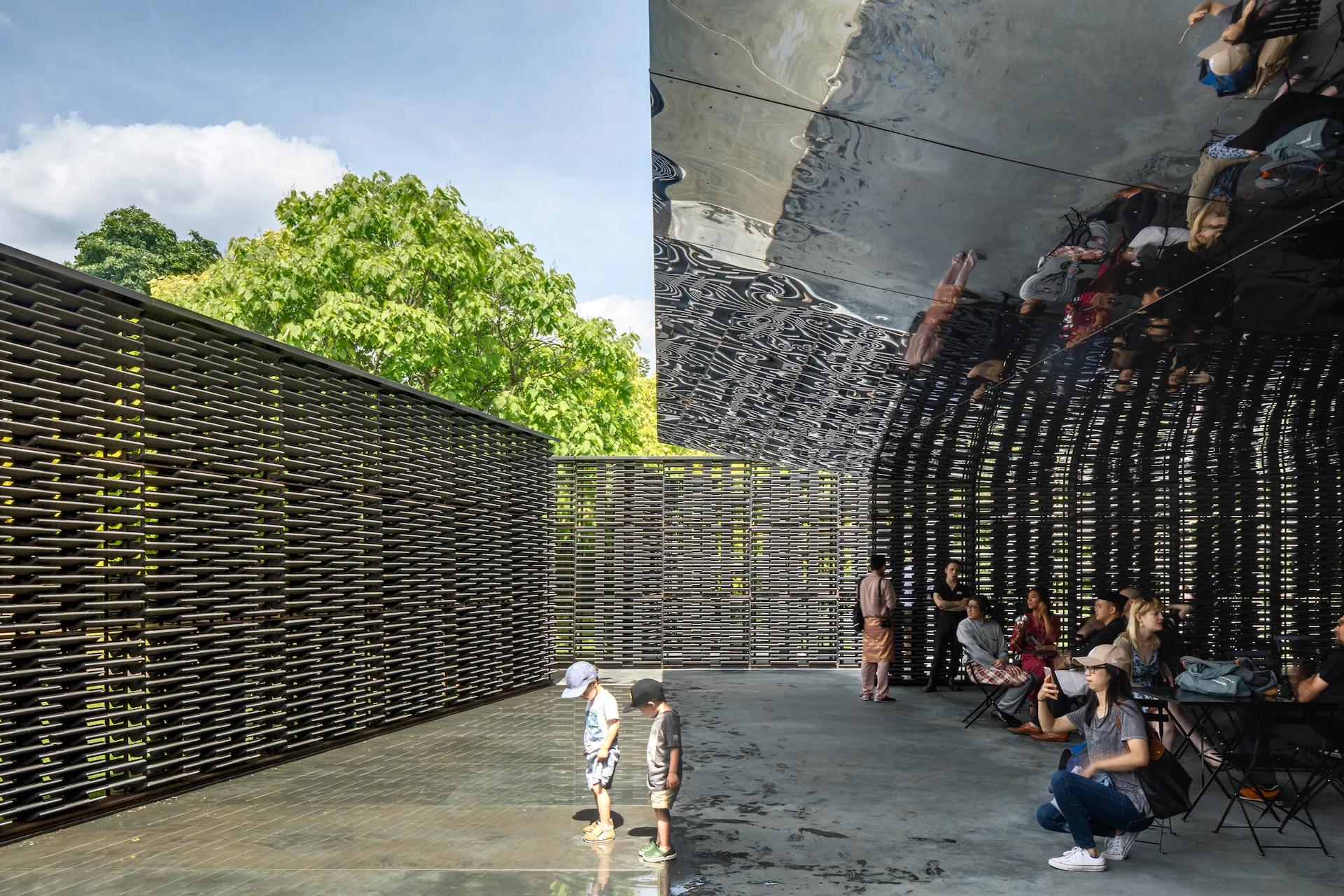
THE COURTYARD OF FRIDA ESCOBEDO'S SERPANTINE PAVILION, 2018
Photo © Rafael Gamo
The youngest architect and second woman awarded the commission to date, Escobedo saw the Serpentine Pavilion project as an opportunity to tell a global-facing story about Mexico’s distinct modernist heritage. Her design foregrounded one of the most iconic features of Mexican homes, the enclosed central courtyard. At the same time, Escobedo’s design reflected her commitment to honoring locality, a fundamental value of her practice. Embodying the “beautiful harmony of influences” that Obrist mentioned in the quote above, the pavilion’s courtyard walls were fabricated in English cement roof tiles, a common local material stacked and staggered to form perforated screens reminiscent of the celosias (breeze walls) and lattice shutters typical in Mexican architecture. With cross-cultural appeal, her airy, two-volume space was enlivened by an interplay between light and shadow, amplified by mirrored canopies and a reflecting pool.
Although her practice is just 16 years old, Escobedo has earned an international reputation for architecture that is thoughtfully layered with meaning, reference, and materiality—engaging the spirit as much as the intellect. “Frida’s work is not about architecture,” Wonne Ickx, architect and founding director of LIGA Space for Architecture, told me about his long-time collaborator. “Her endeavor is far more complex and challenging. Continuously deconstructing and rebuilding narratives, fragmenting and collaging pieces together, she questions her relation to modernity and her own position as a Mexican woman on a global stage. The critical self-examination that Frida applies as the driving force of her practice allows her to approach design tasks from unexpected yet honest and spontaneous angles.”
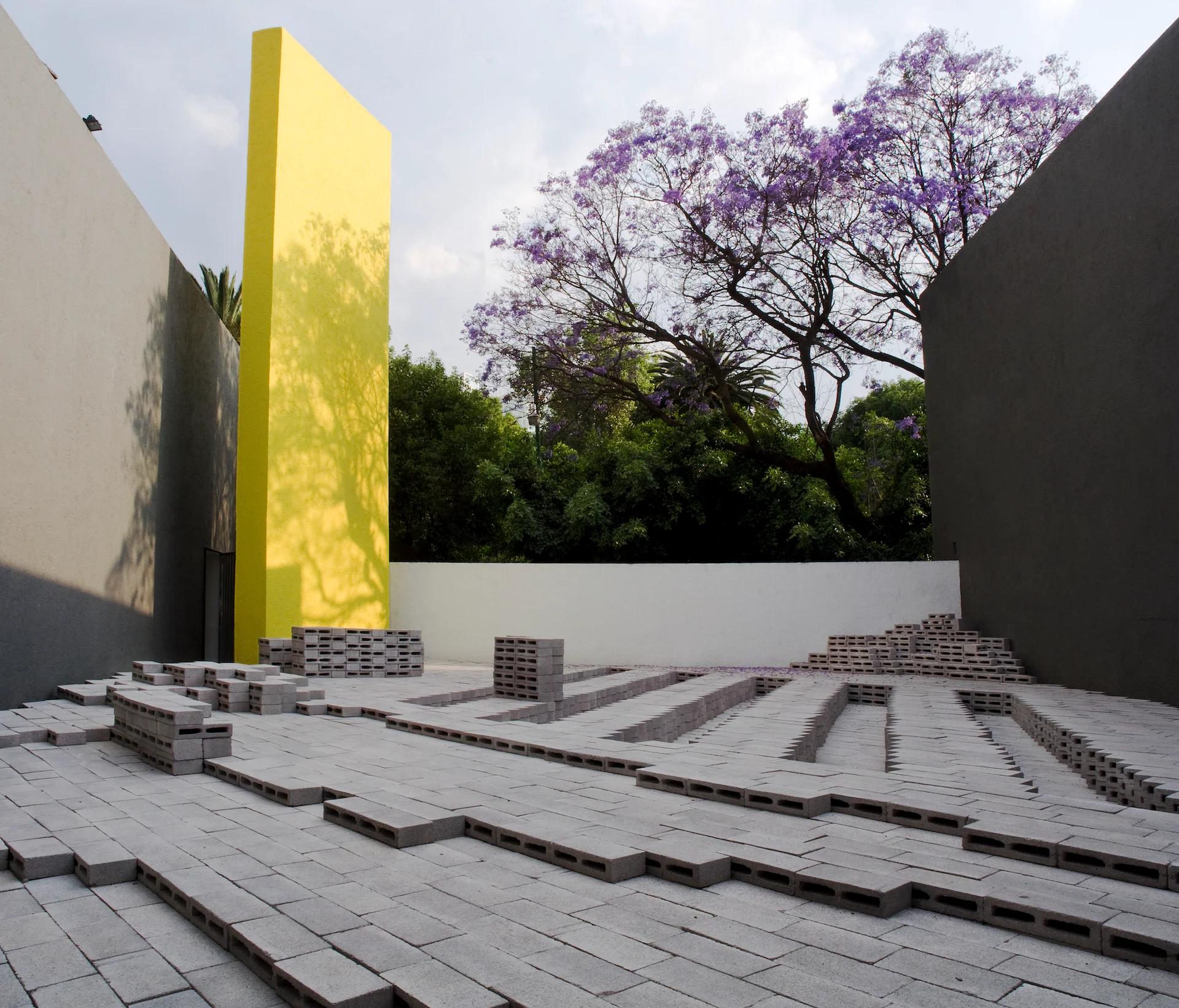
FRIDA ESCOBEDO/ EL ECO PAVILION AT THE MUSEO EXPERIMENTAL EL ECO IN MEXICO CITY, 2010
Photo © Rafael Gamo
Before striking out on her own, when she was 23 and newly graduated from Universidad Iberoamericana, Escobedo teamed up with another young architect, Alejandro Alarcón, to found Perro Rojo. Despite the architecture studio’s promising, early achievements, Escobedo decided to step away after only a few years, with hopes of finding greater independence and time to, in her words, “reflect on what architecture means to me.” Attracted to its multidisciplinary approach, she enrolled in Harvard’s Graduate School of Design, where, she told us, she learned to think differently about spaces. Degree in hand, she returned to Mexico City with a clarity of vision and an ambition to impact cities around the world for the better.
In 2010, Escobedo completed her first solo project, El Eco Pavilion for Mexico City’s Museo Experimental el Eco. Inspired by the contemporary art gallery’s existing architecture—originally designed in the 1950s by Mathias Goeritz, an acolyte of one of Escobedo's heroes, Luis Barragán—her temporary outdoor architectural intervention comprised a field of modular concrete blocks, arranged in a striking yet functional pattern around a Barragán-esque, vibrant yellow wall and lush jacaranda tree. Like so many of her projects that followed, Escobedo’s El Eco Pavilion straddled the line between art and architecture, dancing between the poetic and the pragmatic in celebration of Mexico’s rich heritage.

FRIDA ESCOBEDO/ MAR TIRRENO IN MEXICO CITY, 2018
Photos © Rafael Gamo

FRIDA ESCOBEDO/ AESOP PARK SLOPE IN BROOKLYN, 2019
Photos courtesy of Aesop
While Escobedo’s ambitions grew, her practice has remained rooted in a humble materiality. Just as Le Corbusier famously exploited modest materials to express modernity in the 20th century, Escobedo’s signature work employs everyday vernacular materials crafted in compelling rhythms to communicate nuanced narratives for contemporary contexts. Her design for Café Niddo, for example, marries locally sourced green glazed terracotta tiles with International Style raw concrete to represent the blossoming coffee shop subculture in an emergent, 21st-century Mexico City. In a similar vein, the brick tiles that dominate Escobedo’s much lauded Aesop shop in Brooklyn pay tribute to the historic built fabric of the surrounding Park Slope neighborhood.
Among Escobedo’s most recent projects is Ray Harlem, a mixed-use “vertical community,” designed in collaboration with Handel Architects and developed as a joint venture between the National Black Theatre and the arts-focused real estate company founded by Russian-American entrepreneur and patron Dasha Zhukova. Already under construction on the site of the demolished former incarnation of the venerable East Harlem-based organization, Ray Harlem aims at bringing a new life and a new home to the National Black Theatre. When it opens in 2024, the 21-story structure will offer the community both public and private spaces, including mixed-income residences, artist studios, coworking offices, retail, and, of course, performance halls. To honor the site’s legacy, Ray Harlem’s design integrates West African motifs, such as the facade’s pinkish red bricks that reference the Osun-Osogbo Sacred Grove in Nigeria.
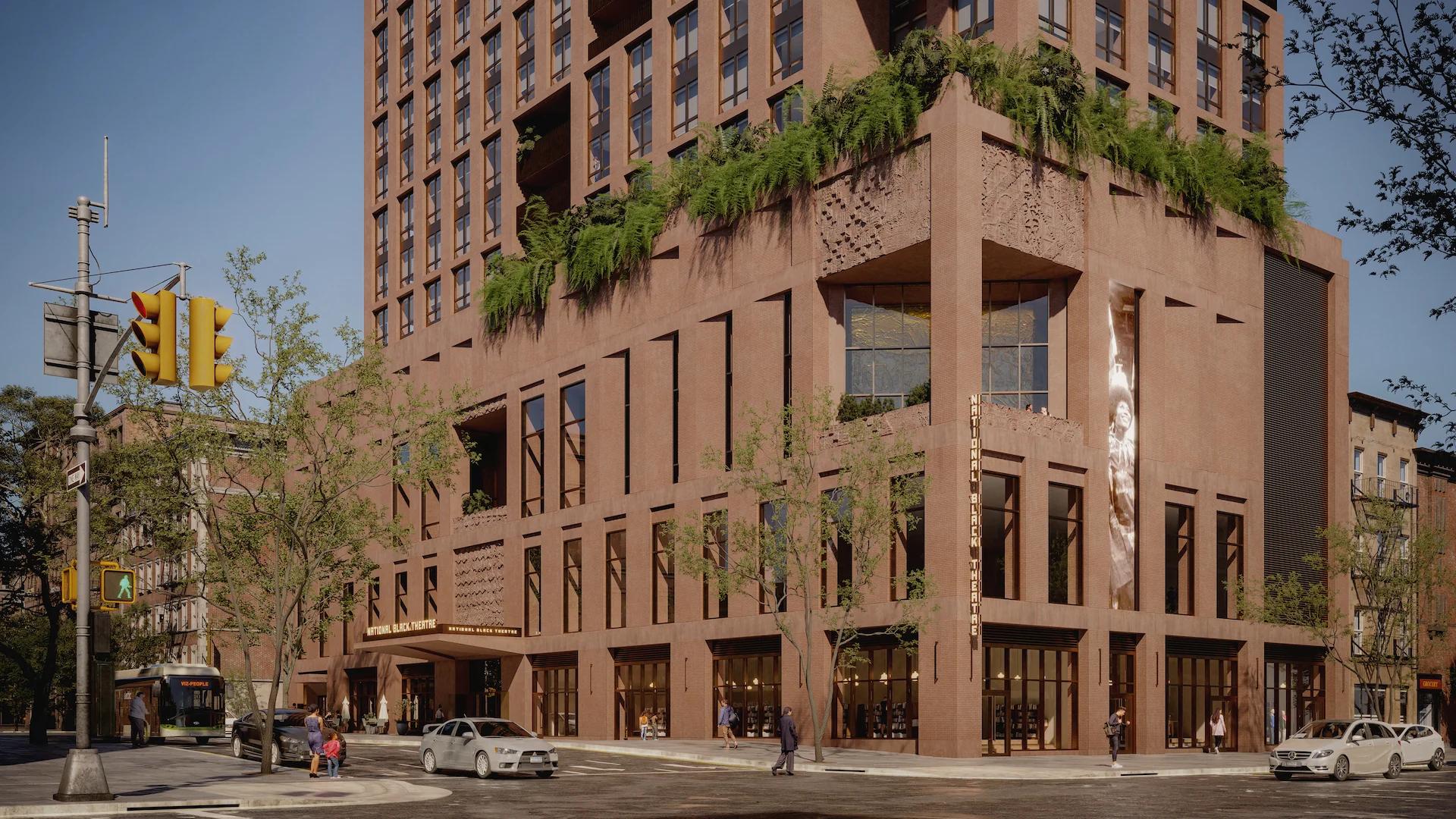
RENDERING OF FRIDA ESCOBEDO'S RAY HARLEM IN MANHATTAN, 2021
© Frida Escobedo
Next month, Escobodo’s work on a more intimate scale will be exhibited in Everything Here Is Volcanic at Friedman Benda—the New York gallery’s first show dedicated Mexico’s rising collectible design movement—curated by Archivo Diseño y Arquitectura Director Mario Ballesteros. Escobodo’s contribution will be her exquisite Creek seating series. Further demonstrating her aptitude for elevating the humble into the spectacular, these handcrafted benches and chairs feature industrial iron frames wrapped and woven with nickel-finished ball chains. The project was originally commissioned by MASA Galeria in Oaxaca, for an exhibition in which participating artists were asked to envision works inspired by Cuban-American artist Ana Mendieta, who spent much time in Oaxaca. Moved by Mendieta’s 1974 film Creek, Escobedo harnessed the fluidity of chains to simulate the experience of floating in a flowing stream of water.
In last week’s conversation, Escobedo shared that a teacher once told her to stop being so modern. The advice has not altered the heroes she names when asked to identify her greatest influences—nearly all outstanding contributors to Mexico’s dreamy golden age of modernism—from artist Frida Kahlo’s determined pursuit of freedom in the face of outmoded rules and attitudes, to architect Juan Sordo Madaleno’s command of form and materiality in service to building a better tomorrow. Firmly rooted in her own heritage, Escobedo’s work has invigorated the international field of architecture. I can't wait to see how her magic will manifest at my beloved Met. ◆
You can attend live Architecture: The Legends webinars by registering here. The program runs through December 19, 2022.


